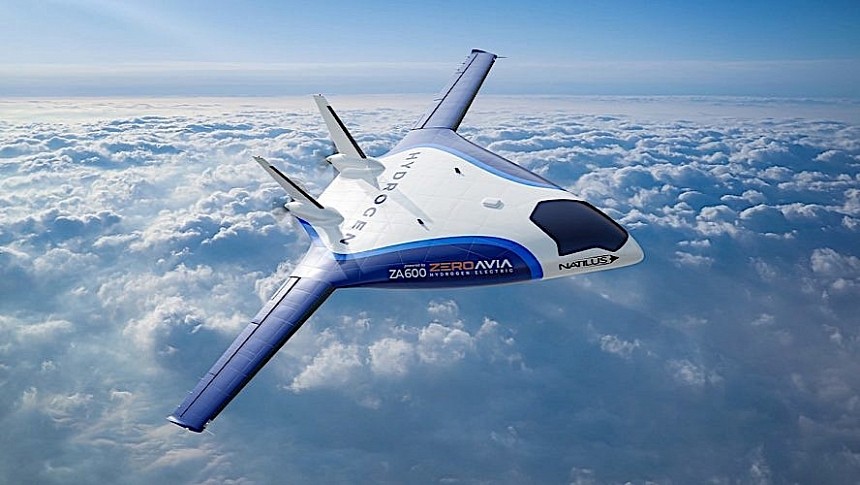If you really think about it, it was only a matter of time before drones graduated from fun devices and military assets to become essential tools for the transportation of goods. And I'm not talking here about some pizza or Amazon parcel delivery, but cargo in the truest sense of the word, the kind that's large and heavy enough to be transported by planes nowadays.
Getting drones involved in cargo transport over long distances makes a lot of sense financially, and that's why a number of companies are knee-deep at the moment trying to come up with the best drones they can. Fairly advanced in doing so is a California crew called Natilus.
The company came into the spotlight not long ago for planning not one, but no less than four cargo drones, differentiated by the amount of freight they can carry and the distances they can cover. At the top of the range sits the Natilus 130T, which should be potent enough to haul 143 metric tons of cargo over distances of up to 5,883 miles (9,468 km).
The 130T is also the last of the four drones we'll get to see, given its complexity. Natilus is starting with something much smaller, the entry-level 3.8T, also known as the Kona. This one is already in the process of being made, and when fully operational it should be capable of moving 43 metric tons of cargo for distances of up to 1,035 miles (1,666 km).
Aside from being very capable and unpiloted, the Kona will also be green. Until this week, we had little information on what powerplants the drone would use to reach speeds of 253 mph (407 mph). Now we know, thanks to an announcement made by Natilus.
The company said it selected the ZeroAvia ZA600 hydrogen-electric engine for the task. Not many details about the engine in this application are known, except for the fact it is already being flight tested and should be certified in 2025. To date, eight test flights of the 600 kW engine have been performed using a 19 seats plane.
To get a sense of how big the drone cargo transport industry is about to get, just consider how much excitement Natilus says its approach caused. To date, the company claims to have pre-orders for over 460 drones, with commitments of $6.8 billion already placed. Among the biggest names waiting in line to get their cargo drones are Ameriflight, Volatus Aerospace, Flexport, Astral, Aurora International, and Dymond.
On its end, ZeroAvia is in cahoots with Textron Aviation, which may use the hydrogen-electric engine being developed for the Cessna Caravan.
After performing a test flight of a sub-scale Kona prototype back in April, Natilus is now moving to build a full-scale drone, with a wingspan of 85 feet (26 meters). No details on when it should be ready have been shared.
The company came into the spotlight not long ago for planning not one, but no less than four cargo drones, differentiated by the amount of freight they can carry and the distances they can cover. At the top of the range sits the Natilus 130T, which should be potent enough to haul 143 metric tons of cargo over distances of up to 5,883 miles (9,468 km).
The 130T is also the last of the four drones we'll get to see, given its complexity. Natilus is starting with something much smaller, the entry-level 3.8T, also known as the Kona. This one is already in the process of being made, and when fully operational it should be capable of moving 43 metric tons of cargo for distances of up to 1,035 miles (1,666 km).
Aside from being very capable and unpiloted, the Kona will also be green. Until this week, we had little information on what powerplants the drone would use to reach speeds of 253 mph (407 mph). Now we know, thanks to an announcement made by Natilus.
The company said it selected the ZeroAvia ZA600 hydrogen-electric engine for the task. Not many details about the engine in this application are known, except for the fact it is already being flight tested and should be certified in 2025. To date, eight test flights of the 600 kW engine have been performed using a 19 seats plane.
To get a sense of how big the drone cargo transport industry is about to get, just consider how much excitement Natilus says its approach caused. To date, the company claims to have pre-orders for over 460 drones, with commitments of $6.8 billion already placed. Among the biggest names waiting in line to get their cargo drones are Ameriflight, Volatus Aerospace, Flexport, Astral, Aurora International, and Dymond.
On its end, ZeroAvia is in cahoots with Textron Aviation, which may use the hydrogen-electric engine being developed for the Cessna Caravan.
After performing a test flight of a sub-scale Kona prototype back in April, Natilus is now moving to build a full-scale drone, with a wingspan of 85 feet (26 meters). No details on when it should be ready have been shared.



















